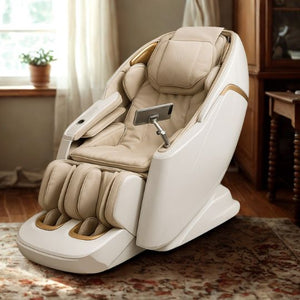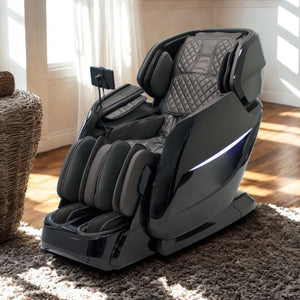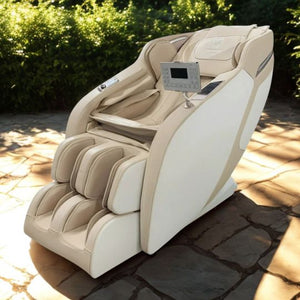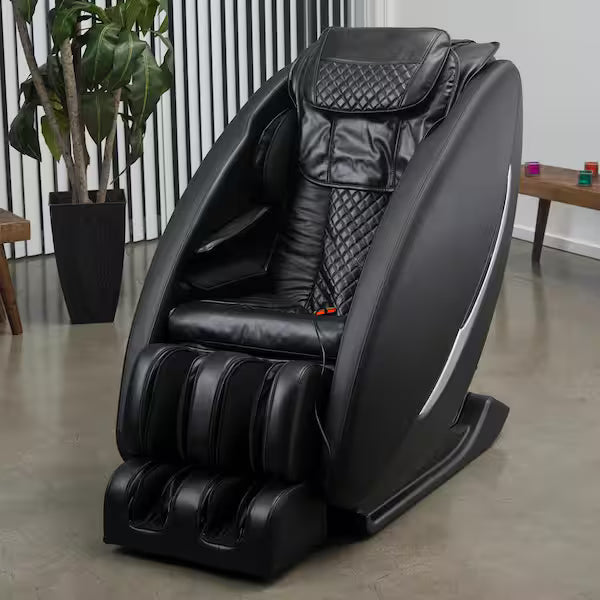What the Global Popularity of Massage Chairs Says About Modern Stress
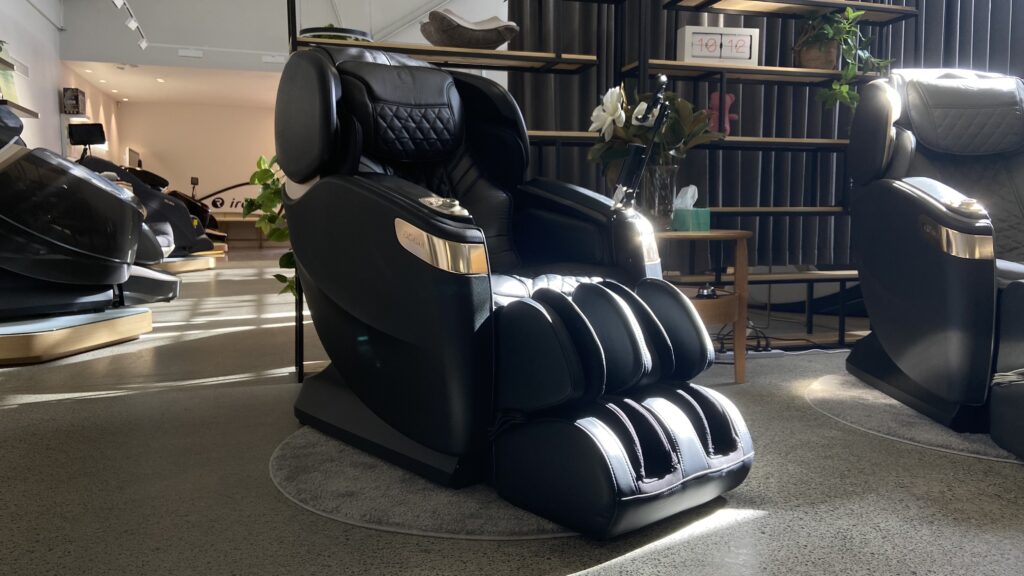
What the Global Popularity of Massage Chairs Says About Modern Stress
Introduction: The World Under Pressure
Stress is no longer just a medical term or a passing emotional state—it has become a global lifestyle condition. From corporate boardrooms in New York to bustling night markets in Phnom Penh, the modern individual carries an invisible burden of deadlines, digital overload, financial pressure, and social demands. One fascinating cultural marker of this worldwide stress epidemic is the rising global popularity of massage chairs.
What was once considered a luxury gadget in Japanese spas or elite health clubs is now a household item, sought after by middle-class families, busy executives, and even retirees. The question is: why? What does the embrace of massage chairs across diverse cultures and economies tell us about the nature of stress in the 21st century?
This article explores that story in detail—connecting the dots between technology, wellness culture, and our collective struggle to find balance in an overstimulated world.
Chapter 1: Stress as a Global Phenomenon
The Numbers Behind Modern Stress
-
According to the World Health Organization (WHO), stress-related illnesses such as burnout, anxiety, and cardiovascular issues are on the rise worldwide.
-
The American Psychological Association reports that 77% of people regularly experience physical symptoms caused by stress.
-
In Asia, rapid urbanization and economic growth have triggered a unique form of stress tied to competition, academic pressure, and shifting lifestyles.
The universality of stress means people across continents are searching for practical solutions that go beyond medication or sporadic vacations. This is where massage chairs have stepped in—not just as machines, but as symbols of the modern stress response.
Why Massage Chairs?
Massage chairs promise something precious: instant, accessible relief. Unlike spa appointments or yoga classes that demand time, travel, and scheduling, a massage chair sits quietly at home, always available, always ready. In a sense, it mirrors the very pace of modern life—fast, efficient, on-demand.
Chapter 2: A Brief History of Massage Chairs
Massage chairs were first developed in Japan in the 1950s, born out of a cultural reverence for shiatsu massage and the innovative spirit of post-war Japanese engineering. Early models were mechanical and somewhat crude, but they tapped into a powerful cultural desire: the blending of ancient healing traditions with modern convenience.
By the 1980s and 1990s, global export markets had discovered massage chairs. From American shopping malls to European wellness clinics, these chairs became status symbols of relaxation. By the 2000s, the technology had advanced dramatically—integrating rollers, airbags, heating functions, and even artificial intelligence.
Now in the 2020s, massage chairs are no longer niche. They are part of a trillion-dollar wellness industry, embraced worldwide. And their spread tells us much about how stress itself has evolved.
Chapter 3: The Psychology of Control and Instant Relief
One key reason for the rise of massage chairs is psychological: they give people a sense of control over their stress. In a chaotic world where external pressures—from economic uncertainty to climate anxiety—often feel overwhelming, the ability to press a button and command relaxation is deeply empowering.
The massage chair symbolizes autonomy over one’s body and emotions. Unlike therapy or group activities, it’s private. Unlike medication, it’s non-invasive. Unlike human massage, it doesn’t require trust in another person. It is stress relief engineered for the age of individualism.
Chapter 4: Technology Meets Wellness
Modern stress is partly a byproduct of technology—constant notifications, endless screens, and the blending of work-life boundaries. Ironically, technology is also providing the antidote.
Today’s high-end massage chairs incorporate:
-
AI-driven customization that adapts to body shape and stress points.
-
Bluetooth connectivity for music and guided meditation.
-
Zero-gravity reclining inspired by NASA research to reduce spinal pressure.
-
Thermal therapy to ease muscle tension and simulate hot-stone massage.
This marriage of advanced engineering and ancient relaxation techniques reflects a deeper cultural shift: the belief that wellness is no longer a separate, spiritual activity but an integrated, tech-enhanced part of daily living.
Chapter 5: Globalization of Wellness Culture
The rise of massage chairs is not uniform—it reflects regional differences in how stress is perceived and treated.
-
In Japan and South Korea, massage chairs are integrated into everyday life, from airports to shopping centers, reflecting a collective acceptance of mechanical wellness.
-
In the United States, they are often marketed as luxury lifestyle items, a reward for overwork and success.
-
In Europe, they intersect with the spa tradition, enhancing centuries-old wellness culture.
-
In Cambodia and Southeast Asia, the growth of the middle class and rising health awareness are making products like Massage chair Cambodia more popular, bridging traditional massage practices with modern living.
This global spread suggests that while cultures differ, the underlying condition—stress—remains a shared human experience.
Chapter 6: The Cultural Symbolism of Massage Chairs
Massage chairs are more than functional—they are cultural symbols.
-
Status: Owning a massage chair can symbolize success, the ability to prioritize self-care in a busy world.
-
Escape: For many, sitting in one represents a brief escape from work, family pressures, or urban chaos.
-
Health Investment: Increasingly, massage chairs are framed not as indulgences but as preventive healthcare tools, reducing long-term costs of stress-related illness.
The symbolism is powerful: the massage chair represents a modern ritual of self-preservation.
Chapter 7: Stress, Capitalism, and Consumer Culture
Massage chairs also reflect the economic side of stress. In capitalist societies, the pressure to perform, compete, and produce is immense. Ironically, the very systems that generate stress also produce the industries—like the wellness sector—that profit from relieving it.
This doesn’t necessarily diminish the value of massage chairs, but it raises important questions: Are we addressing the root causes of stress, or simply soothing the symptoms? Is the popularity of massage chairs a sign of progress in self-care, or evidence of a deeper systemic failure to balance work and life?
Chapter 8: The Future of Stress Relief Technology
Looking ahead, the massage chair industry is likely to evolve further:
-
Integration with health monitoring: Chairs that track heart rate, cortisol levels, and stress biomarkers in real-time.
-
VR-enhanced relaxation: Pairing massage with immersive meditation landscapes.
-
Smart-home ecosystems: Integration with AI assistants, adjusting massage programs based on your sleep or work patterns.
-
Accessibility innovations: Affordable models tailored for developing economies, making products like Massage chair Cambodia available to broader demographics.
These innovations suggest that massage chairs are not just a fad but a lasting feature of the global wellness landscape.
Chapter 9: Lessons About Modern Stress
So, what does the popularity of massage chairs ultimately reveal about modern stress?
-
Stress is universal – It transcends geography, culture, and income level.
-
Relief must be convenient – People prioritize solutions that fit into their fast-paced lives.
-
Technology is both culprit and cure – The same systems that create stress also produce tools to manage it.
-
Wellness is commodified – Health is no longer just a natural state but a product we buy, often at high cost.
-
Humans crave autonomy – The rise of self-service stress relief reflects a desire for control in uncertain times.
Chapter 10: Massage Chairs as a Bridge Between Tradition and Modernity
In Cambodia and across Southeast Asia, massage has always been part of cultural heritage, tied to healing, spirituality, and community. The introduction of modern massage chairs doesn’t erase this tradition—it transforms it. For many, purchasing a Massage chair Cambodia is not about abandoning cultural practices but about integrating them with contemporary lifestyles.
This fusion of the ancient and the modern, the human and the mechanical, may be the ultimate lesson: stress may be inevitable, but so is human adaptability.
Conclusion: More Than Machines
The global rise of massage chairs is not just a consumer trend—it is a cultural mirror. It tells us that stress is the defining condition of our era, but also that humans are endlessly resourceful in finding ways to cope.
From Tokyo skyscrapers to Phnom Penh apartments, the massage chair is a quiet witness to our collective struggle for balance. It represents both the problem and the solution, the chaos of modern life and the human determination to reclaim peace—even if only for 30 minutes at a time.
As technology advances and wellness culture continues to expand, one thing seems certain: the massage chair will remain a fixture in the global conversation about stress, health, and the pursuit of calm.
And perhaps that is its most profound message—modern stress may be global, but so is the human quest for relief.

